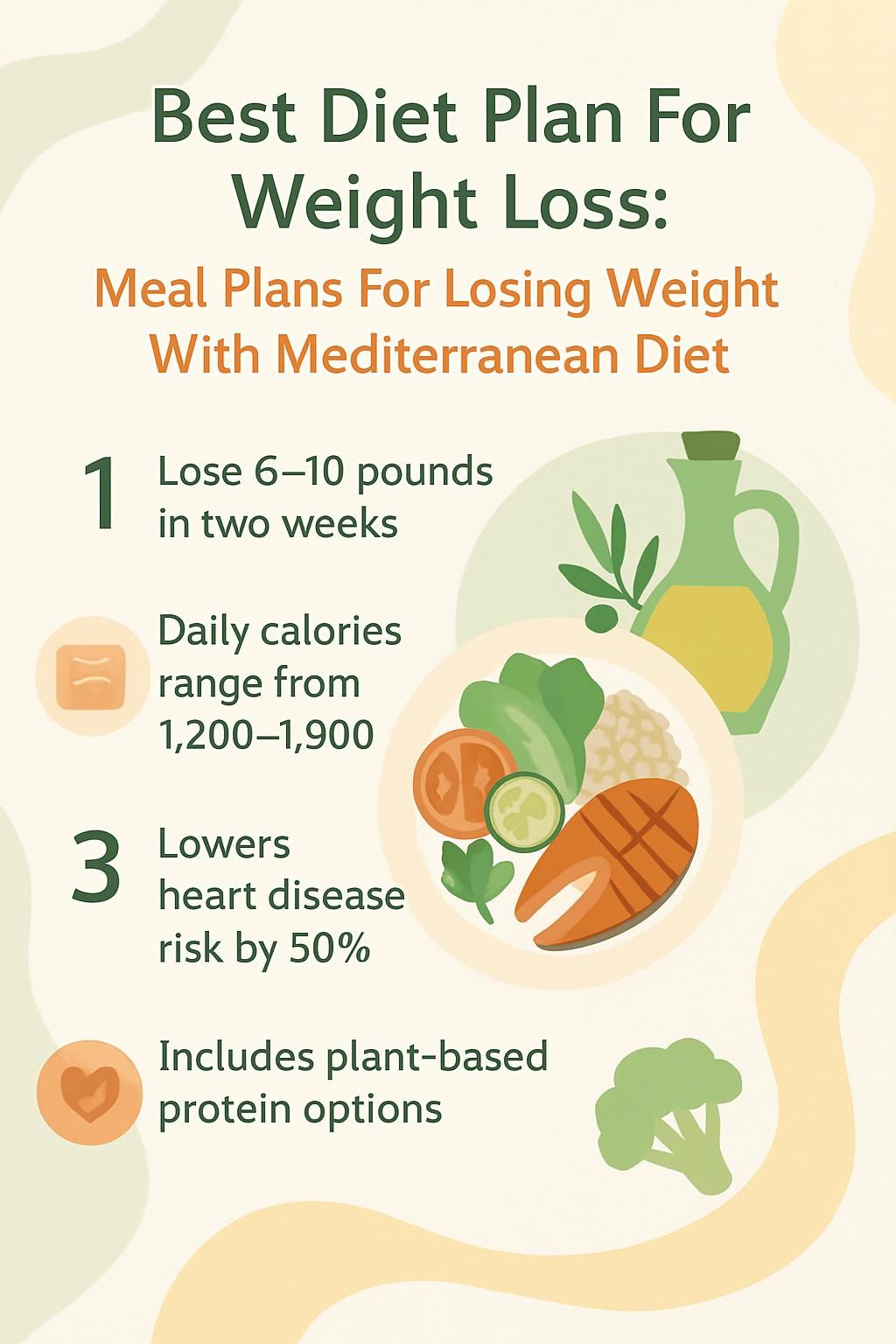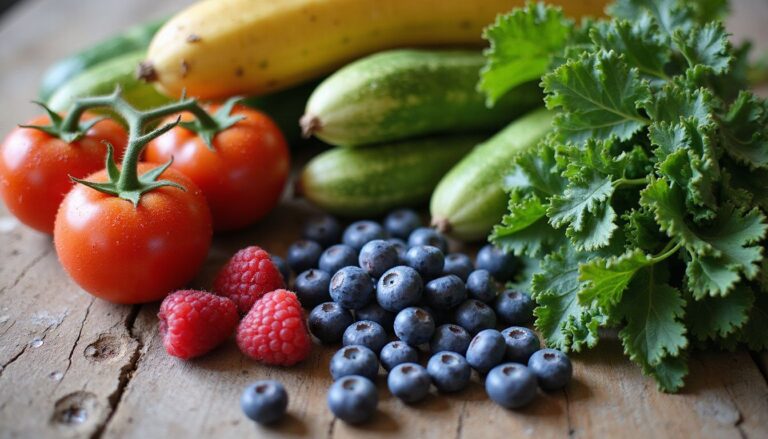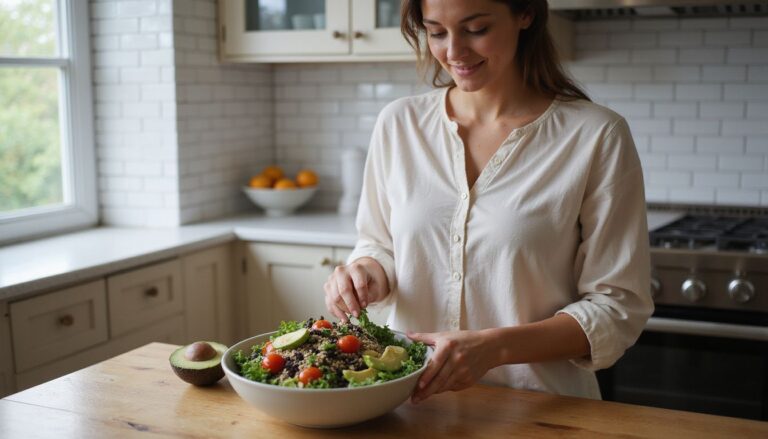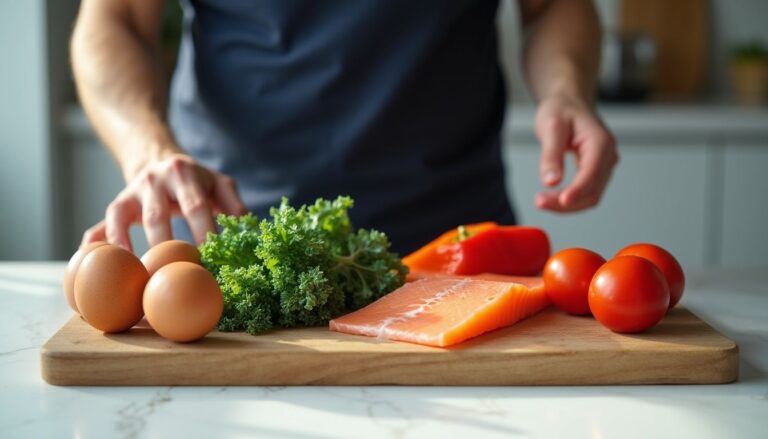Best Diet Plan For Weight Loss: Meal Plans For Losing Weight With Mediterranean Diet
Our Nutrition Assistant AI Suite will transform your body. You will lose fat, get toned, and build muscle. Gain confidence and optimal health.
If you want the best diet plan for weight loss but feel flooded with options, the Mediterranean diet is a smart place to start. It centers on real food, supports a healthy weight, and has strong science behind it. This guide gives you a clear eating plan, simple habits, and practical meal ideas so you can lose weight and keep it off.
Key Takeaways
- The Mediterranean diet highlights fruits, vegetables, whole grains, beans, nuts, extra-virgin olive oil, and lean proteins. It supports steady weight loss without strict calorie counting.
- Major health groups, including the Mayo Clinic, report lower risks of heart disease, obesity, type 2 diabetes, and high blood pressure with this eating style.
- Healthy fats from fish, olives, and nuts help you feel full. Pair them with portion control to keep daily calories near 1,200 to 1,800 based on your activity level.
- People often see early progress in the first two weeks, sometimes 6 to 10 pounds, mostly from better food choices and water changes. Results vary.
- The plan is flexible. It works for meat eaters and for plant-based eaters using beans, lentils, tofu, and whole grains.

Understanding the Mediterranean Diet

The Mediterranean diet focuses on plants, seafood, and healthy fats with simple cooking methods. You build meals around vegetables, fruit, whole grains, beans, nuts, and olive oil. Lean proteins such as fish and poultry appear often. Red meat and sweets show up less often.
What is the Mediterranean Diet?
This eating style features plant foods first. Think leafy greens, tomatoes, berries, apples, oats, quinoa, chickpeas, and lentils. Olive oil is the main fat. Fish, yogurt, and eggs are used often. Herbs and spices add flavor instead of heavy sauces.
You avoid most ultra-processed foods and added sugars. That shift reduces empty calories and makes weight control easier. Many clinicians recommend this approach because it blends taste, nutrition, and long-term health.
I switched my lunches to hearty salads with grilled salmon, olive oil, and lemon. I felt full longer and did not miss fast-food sandwiches.
What are the core principles of the Mediterranean Diet?
Base your plate on vegetables, fruit, whole grains, beans, and nuts. Use extra-virgin olive oil in place of butter. Choose fish and poultry more often than red meat.
You do not need to ban food groups. Instead, build most meals from nutrient-dense foods and keep portions reasonable. This helps you stay satisfied while trimming calories.
Limit sweets and processed foods. Move your body daily, and enjoy meals with others. Calorie needs vary, but many people do well in the 1,200 to 1,800 range depending on size and activity.
How effective is the Mediterranean Diet for weight loss?
This plan is like a steady gear, not a crash course. It supports fat loss while you build habits you can keep.
How do nutrient-dense foods aid weight loss?
Nutrient-dense foods give you more vitamins, minerals, and fiber for fewer calories. Vegetables, fruit, whole grains, beans, and lean protein fill you up without blowing your calorie budget.
A bowl of raw veggies with hummus or a big salad with grilled chicken can keep you satisfied longer than chips or pastries. Many people find a 1,200 to 1,800 calorie range easier when most foods are high in fiber and protein.
Choosing wholesome foods makes every bite count,
says nutritionist Dr. Janet Brill.
Loading your plate with vegetables and lean protein can lead to meaningful early losses in the first couple of weeks, says Dr. Brill.
These choices also support heart and metabolic health as you work toward a lower weight.
What are the benefits of healthy fats and portion control?
Healthy fats from olive oil, nuts, seeds, and fatty fish help you feel satisfied after meals. They can improve cholesterol levels and support brain function.
In this plan, healthy fats replace saturated fat from butter or heavy cuts of meat. Enjoy a small handful of almonds, or a drizzle of olive oil on vegetables. Keep amounts modest to manage calories.
Portion control matters. A simple plate guide helps. Fill half the plate with vegetables, one quarter with whole grains, and one quarter with lean protein. Include a small treat if you like, about 75 calories per day.
How does eating fewer processed foods impact weight loss?
Cutting ultra-processed foods usually lowers daily calorie intake and improves nutrition. The Mediterranean diet encourages home cooking with vegetables, beans, whole grains, fish, and yogurt. This shift reduces added sugars, sodium, and low quality fats.
Simple swaps help. Prepare a pot of vegetable soup. Make a spinach salad with berries and vinaigrette. These meals favor fiber and protein, which support fullness and weight control.
Main components of the Mediterranean Diet
Each food group brings something important. Together they form a balanced diet that supports weight management and overall health.
Why are fruits and vegetables important in this diet?
Fruits and vegetables deliver fiber, water, and key nutrients for very few calories. You can eat generous portions, which boosts fullness while keeping calories in check.
Higher intake links to lower risks of heart disease, diabetes, obesity, and some cancers. If you manage blood sugar, favor non-starchy vegetables more often than fruit. Try sliced carrots, cucumbers, or berries instead of dessert.
Your digestion may change briefly as your fiber intake climbs. This usually settles as your body adapts. I found starting meals with a salad made it easier to eat less of everything else.
How do whole grains and legumes contribute to weight loss?
Whole grains and legumes provide complex carbs, fiber, and plant protein. They digest slowly, which supports steady energy and better appetite control.
Try overnight oats, quinoa bowls, or a Tuscan white bean soup. Add chickpeas to a Niçoise-style pita for extra fullness without many calories. These choices help you stay within a calorie target while meeting nutrient needs.
What role do healthy fats play in the Mediterranean Diet?
Olive oil, nuts, seeds, and fish rich in omega-3s are core to this plan. Use olive oil to cook vegetables or whisk into dressings. Spread nut butter on whole grain toast for breakfast.
Replacing saturated fat with unsaturated fat can lower harmful cholesterol. Healthy fats also improve satisfaction, which makes portion control easier.
Research links diets higher in unsaturated fats to lower risks of heart disease. You can enjoy balanced meals without going fat free or using very low calorie plans that are hard to maintain.
What are the best lean protein sources to include?
Top choices include fish such as salmon, shrimp, and other white fish, plus skinless chicken and turkey. Eggs, Greek yogurt, and cottage cheese are helpful. Beans, lentils, and tofu cover plant-based needs.
Portion sizes of 3 to 5 ounces of cooked protein work well for most adults. Add a serving at each meal to support muscle and satiety during weight loss.
Once you choose your protein, it helps to know why red meat and desserts should be limited.
Why should red meat and sweets be limited?
Eating red meat and sweets often can raise the risk of heart disease and weight gain. In the Mediterranean pattern, they sit at the top of the pyramid, which signals small amounts and less frequent use.
Swap red meat for fish, beans, or poultry most of the time. Keep sweet treats to about 75 calories a day. When I cut daily desserts, I noticed more consistent progress and better energy for exercise.
The Mediterranean Diet Food Pyramid explained
The pyramid is a simple map. It shows which foods to eat most and which to save for special occasions.
What is the food hierarchy in the Mediterranean Diet?
The base includes vegetables, fruit, and whole grains. Build most meals from these foods because they are rich in nutrients and lower in calories. Next, add healthy fats, mainly olive oil and nuts.
Lean proteins follow, such as fish, poultry, beans, and lentils. Dairy like yogurt and some cheeses can show up in small to moderate amounts. Red meat and sweets sit at the peak, which means less often and in small portions.
Using this hierarchy each week keeps your plate colorful and satisfying. I make better sandwiches now by stacking whole grain bread with lean turkey, a pile of vegetables, and a light olive oil drizzle.
What lifestyle habits complement this diet?
Daily movement strengthens results. Aim for at least 30 minutes of moderate activity, such as brisk walking or cycling. Increase time and intensity over weeks as you feel ready.
Prioritize 7 to 9 hours of sleep since poor sleep can raise hunger. Manage stress with journaling, deep breathing, or a short walk. Track meals and progress with a notebook or app to spot patterns and wins.
Share meals with friends or family. Eating slowly at the table helps you notice fullness and enjoy food more.
What are the advantages of the Mediterranean Diet for weight loss?
This plan supports your heart, metabolism, and long-term weight control. It focuses on real food and realistic habits.
How does this diet support long-term weight loss?
Steady habits lead to steady results. You build plates with plants, whole grains, and lean protein, and you keep portions in check. Many people lose about 1 to 2 pounds per week once they find their routine.
Meal prepping helps you hit daily calorie goals without cutting too low. Some people use intermittent fasting, such as a 12 to 14 hour overnight fast, while eating Mediterranean foods. Work with your clinician if you consider more structured fasting.
Very low calorie plans, especially under 800 calories per day, require medical supervision. They are not the aim of this approach.
How does it promote heart health?
Fruits, vegetables, whole grains, nuts, olive oil, and fish support healthy cholesterol levels and blood pressure. Replacing saturated fats with olive oil and fish fats can reduce heart risk over time.
- Large trials report up to 30 percent lower cardiovascular risk with a Mediterranean pattern that includes olive oil or nuts.
- Weight loss of even 5 to 10 percent can improve blood pressure and triglycerides.
- More fiber from plants helps lower LDL, the harmful cholesterol.
As I followed a Mediterranean plan and moved more, my energy improved and my lab numbers moved in the right direction.
How does it reduce risks of chronic diseases?
Eating a variety of plants and seafood supports better blood sugar, blood pressure, and cholesterol. Losing 3 to 5 percent of starting weight often improves triglycerides and glucose. More loss often brings larger benefits.
This pattern is linked with lower risks of type 2 diabetes and certain cancers. Fill your cart with leafy greens, berries, olive oil, beans, and fish to build meals that protect long-term health.
How does it enhance metabolic function?
Fiber-rich foods slow digestion, which steadies blood sugar and curbs cravings. Regular meal timing helps your body use energy more efficiently. Lean protein at each meal supports muscle, which keeps your metabolism active.
I noticed better energy and fewer cravings after I increased vegetables and swapped refined snacks for nuts and fruit. Pair fiber with healthy fats, such as olive oil on a big salad, to improve satisfaction and nutrient absorption.
If you consider a very low calorie plan, speak with your healthcare provider first. Medical support keeps it safe.
7-Day Mediterranean Diet Meal Plan
Use this simple plan as a starting point. Adjust portions to your calorie needs and activity level.
What to eat for breakfast, lunch, and dinner on Day 1?
Breakfast: 3/4 cup bran flakes with one sliced banana and one cup fat-free milk. This combo provides fiber, potassium, and calcium.
Lunch: One mini whole wheat pita with 3 ounces turkey breast, roasted red pepper, lettuce, 1 teaspoon mayonnaise, and mustard. Add a part-skim mozzarella stick and two kiwis. Or try a veggie Niçoise pita with hummus, red peppers, chickpeas, and olives.
Dinner: Four ounces flounder with one cup couscous and one cup steamed broccoli. Enjoy a small single-serve ice cream, about 75 calories.
Snacks: Sliced bell peppers and a banana if you need extra energy.
What to eat for breakfast, lunch, and dinner on Day 2?
Breakfast: Smoothie with one cup frozen berries, half a banana, and eight ounces low-fat or fat-free milk. Add one or two hard-boiled eggs for protein.
Lunch: One cup vegetable soup with a veggie burger on whole grain toast or an English muffin. Add one cup grapes.
Dinner: Barbecue-style cutlets with a sauce of barbecue sauce, Dijon mustard, and a splash of orange juice. Serve with two cups sautéed spinach or a baked potato.
Portions can be scaled up or down based on your goals.
What to eat for breakfast, lunch, and dinner on Day 3?
Breakfast: One half cup quick oats cooked in low-fat milk. Top with half an apple, one teaspoon honey, and cinnamon.
Lunch: Chicken salad made with 4 ounces shredded chicken, 1/4 cup red grapes, 1 tablespoon almonds, 1/4 cup chopped celery, 1 tablespoon light mayo, and 1 tablespoon Greek yogurt. Serve on lettuce with multigrain toast.
Dinner: Four ounces steamed shrimp with a baked potato topped with three tablespoons salsa and one tablespoon Greek yogurt. Add three cups steamed spinach. Choose a small chocolate square or a 100 to 150 calorie ice cream bar if desired.
What to eat for breakfast, lunch, and dinner on Day 4?
Breakfast: One cup plain or low-sugar Greek yogurt with one cup fresh berries.
Lunch: Tomato soup plus a mini whole wheat pita with 3 ounces roast beef, horseradish, mustard, tomato, and lettuce. Snack on two cups raw vegetables with one quarter cup hummus.
Dinner: Four ounces poached salmon with a slaw of 1 1/4 cups coleslaw mix, two scallions, one tablespoon rice vinegar, and 1 1/2 teaspoons olive oil. Add one cup cooked quinoa.
Prepping ingredients ahead made these choices easy for me on busy days.
What to eat for breakfast, lunch, and dinner on Day 5?
Breakfast: One cup Cheerios with 1/2 cup berries and 1 tablespoon almonds. Add six ounces plain Greek yogurt.
Lunch: Mushroom quesadillas with fresh cucumber spears. Add 1/2 cup cottage cheese or plain Greek yogurt and two clementines.
Dinner: Balsamic-glazed pork tenderloin with roasted butternut squash. This lean cut keeps saturated fat lower than fattier options.
What to eat for breakfast, lunch, and dinner on Day 6?
Breakfast: Whole grain frozen waffle with two tablespoons nut butter and a small sliced banana. Sprinkle cinnamon and nutmeg. Drink eight ounces fat-free milk.
Lunch: Tuna salad made with low-fat mayo and nonfat yogurt, plus ten baby carrots, two thirds cup Greek yogurt, and a small pear.
Dinner: Spicy sausage jambalaya packed with vegetables. Add three cups spinach sautéed in one tablespoon olive oil with garlic.
What to eat for breakfast, lunch, and dinner on Day 7?
Breakfast: Half a whole wheat English muffin with one ounce reduced-fat cheese, sliced tomato, and a cup of spinach, topped with a poached egg. Add one grapefruit.
Lunch: Black bean salad with 1/2 cup black beans, diced bell peppers, chopped red onion, scallions, and one teaspoon vinegar over greens. Serve with one corn tortilla and a piece of fruit.
Dinner: Choose grilled fish or chicken with cooked greens such as Swiss chard or broccoli and a side of brown rice or quinoa. Use olive oil in place of butter.
Customizing the Mediterranean Diet to fit your needs
Shape the plan to match your preferences, health needs, and culture. Small changes make it easier to stay consistent.
What are vegetarian and vegan options?
Plant-forward Mediterranean meals are easy to build. Use vegetables, fruit, whole grains, beans, lentils, tofu, nuts, and seeds as your base. Try mushroom quesadillas, black bean salads, or a chickpea and vegetable stew.
Pick plant-based yogurt made from almond, soy, or coconut for breakfast bowls. Swap cheese flavor with nutritional yeast if you prefer vegan meals. I replaced cheese in my quinoa bowl with a spoon of pesto and nutritional yeast, and the flavor still popped.
Many people following plant-based Mediterranean patterns eat fewer calories on average, which can help with weight loss [1].
How to make gluten-free substitutions?
Swap wheat-based products with gluten-free grains such as quinoa, brown rice, millet, or certified gluten-free oats. Choose breads and pasta made from chickpea, lentil, corn, or almond flour.
Polenta, sweet potatoes, beans, fruit, vegetables, fish, and olive oil are naturally gluten free. Plan your menu and prep ingredients on weekends to keep weekday cooking simple. Build plates with lean protein, plenty of produce, and healthy fats.
How to choose budget-friendly options?
Focus on affordable staples. Buy seasonal produce, frozen vegetables, and store brands. Beans, lentils, eggs, oats, and brown rice keep costs low while delivering nutrients.
Plan meals before you shop. Use leftovers for lunches and freeze extra portions. I save money at farmers markets and by buying beans and grains in bulk.
How does physical activity support weight loss?
Exercise helps you burn calories and protect muscle while you lose fat. Movement also lifts mood and improves sleep, which makes healthy eating easier.
How to combine exercise with the Mediterranean Diet?
- Start with 30 minutes of moderate activity most days, such as brisk walking or cycling.
- Build up time and intensity gradually to keep progress going.
- Pick activities you enjoy, like swimming, hiking, dancing, or group classes.
- Balance energy. Pair whole foods with regular movement for sustainable results.
- Include lean protein and healthy fats around workouts to support recovery.
- Have a small snack rich in complex carbs before longer sessions.
- Track food and activity in a journal or app to spot patterns.
- Make small changes you can keep. Consistency beats quick fixes.
Next, look at exercise options that fit a busy life.
What are some physical activity options?
Walking, cycling, and swimming are simple and joint friendly. Bodyweight routines at home work for strength. Group classes add motivation and structure.
Public health guidance suggests at least 150 minutes per week of moderate activity. I joined a local walking group, and the social boost made it easier to stick with my plan.
What common mistakes should be avoided on the Mediterranean Diet?
Small missteps can stall progress. Spot them early so your plan stays on track.
How to manage intake of healthy fats properly?
Measure healthy fats. Use about one tablespoon of olive oil per meal. Limit nuts to a small handful. These foods are nutrient rich but calorie dense.
Rotate sources across the week, such as olive oil, almonds, walnuts, chia, and salmon. Add a teaspoon of olive oil to vegetables instead of heavy dressings. Choose vegetables or fruit for snacks more often than second helpings of nuts.
Why is monitoring portion sizes important?
Large portions, even of healthy foods, can push calories too high. Use smaller plates and pre-portion snacks. Fill half the plate with vegetables, then add whole grains and protein.
The Mayo Clinic Diet teaches practical serving sizes and mindful eating in its LIVE IT phase. Planning meals in advance leads to better consistency, which supports long-term weight management.
How to avoid processed Mediterranean foods?
Stick to whole ingredients. Choose fresh or frozen produce instead of packaged versions with added sugar or sodium. Cook with extra-virgin olive oil and plain nuts. Limit flavored oils, bottled dressings, and processed meats.
Home cooking gives you control. Season with herbs, citrus, garlic, and spices. I had more energy after trading convenience meals for simple home-cooked dishes. Studies show people who cook at home take in fewer ultra-processed calories than those who rely on ready-made foods [2].
Conclusion
The Mediterranean diet is a practical eating plan for weight loss and long-term health. You center meals on plants, lean proteins, and healthy fats, and you keep portions reasonable. Regular physical activity and better sleep strengthen your results.
Work with a healthcare professional if you have a medical condition or plan major calorie changes. Most people do best with a moderate calorie range, steady habits, and food they enjoy. This approach helps you lose weight and protect your heart at the same time [1].
FAQs
1. What is the Mediterranean diet and how does it help with weight loss?
The Mediterranean diet focuses on whole grains, fruits, vegetables, olive oil, fish, and nuts. Studies show this eating plan can support steady weight loss by reducing processed foods and added sugars while increasing fiber intake for better satiety.
2. Can I lose weight quickly with a Mediterranean meal plan?
Most people experience gradual fat reduction rather than rapid results when following a Mediterranean meal plan. Research indicates that slow and consistent progress leads to more sustainable outcomes compared to restrictive diets.
3. Are there specific foods I should avoid in the Mediterranean diet for losing weight?
Limit red meat, sugary drinks, refined grains like white bread or pasta, and high-fat dairy products. Choosing lean proteins such as poultry or seafood along with plant-based meals helps maintain calorie control.
4. How do daily meal plans look when using the Mediterranean approach for fat loss?
A typical day includes oatmeal topped with berries at breakfast; salad with chickpeas and olive oil at lunch; grilled salmon paired with roasted vegetables at dinner; plus fruit or yogurt as snacks. This structure provides balanced nutrition while supporting healthy body composition changes over time.
Summary: The Mediterranean diet emphasizes nutrient-rich foods that promote lasting health benefits alongside effective fat management according to clinical research findings.







